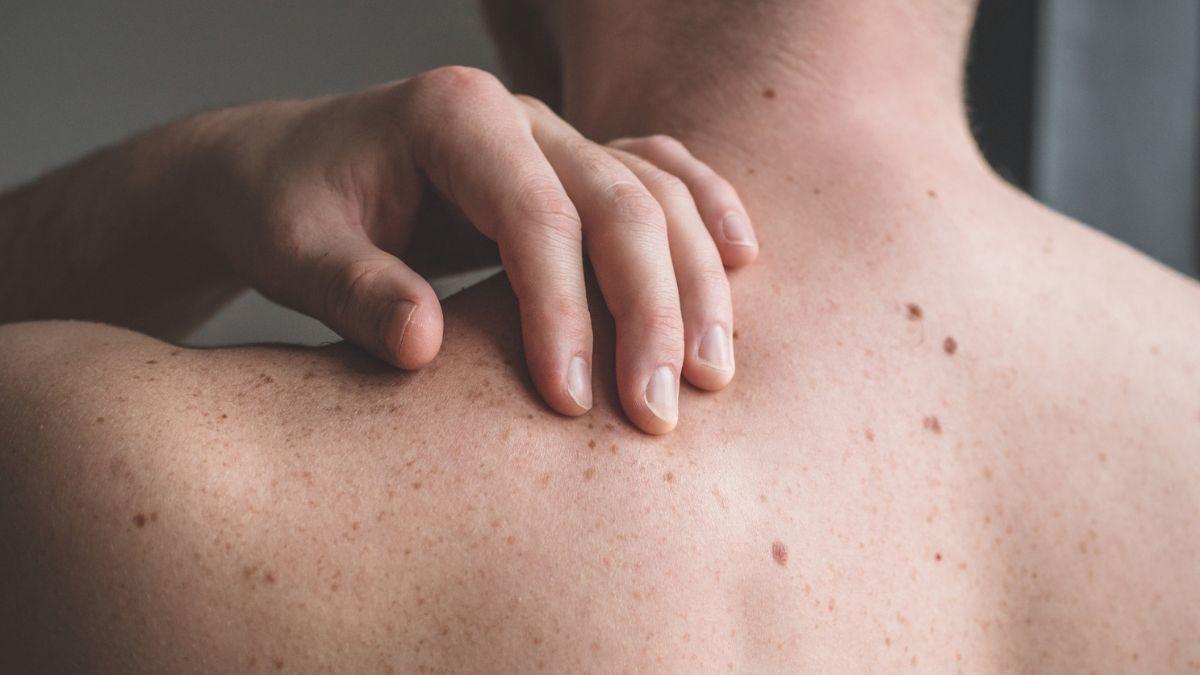More frequent in those who spend many hours in the sun. They appear harmless, but they can evolve into invasive cancer. Timely treatment is key. In Italy at least 400 thousand people suffer from it, especially after 50 years of age
True Martinella
A small lesion on the skin should never be underestimated. Whether it is a “strange” mole or maybe even just a rough speck. This is the message at the heart of the awareness campaign Marks on the skin promoted by the Italian Society of Medical Dermatology (SIDeMaST) which aims to promote early diagnosis.
How to recognize dangerous moles
—
As for moles, it is vital that people learn the habit of self-check the skin for any changes who have to get suspicious and book a visit to the dermatologist whenever something strange is noticed. We must focus on lesions that are different from the others, it is no coincidence that melanoma is often referred to as the “ugly duckling”. The simplest method is the one known worldwide as ABCDE, a very simple five-point scheme: A stands for asymmetry, B for edges, C for color, D for diameter and E for evolution. If a mole changes in any of these aspects, it is better not to delay and go to the specialist. Also bearing in mind that the greater the number of moles present on a person’s body, the greater the chance that they will develop skin cancer. It is therefore essential to monitor the appearance of new moles and the changes that may characterize existing ones. Inspecting the skin (better to do it in pairs, or in front of a mirror) is of fundamental importance, however, also to recognize the actinic keratoses, possible precancerous lesionswhich are at the center of the SIDeMaST campaign, and carried out thanks to the non-conditioning contribution of Pierre Fabre.
Actinic keratosis on the areas most exposed to the sun
—
Those suffering from actinic keratosis have skin lesions resulting from prolonged exposure to ultraviolet rays, which often remain stable or regress spontaneously, but which they can also develop into invasive cancer. For this reason, the attention of experts towards this pathology has increased in recent years, known since the end of the nineteenth century but long underestimated, but included by the Ministry of Health among skin cancers since 2016. “Actinic keratosis is a injury considered one very early form of squamous cell carcinomawhich occurs after the age of 40 – he explains Giuseppe Monfrecola, president of SIDeMaST -. It is one of the most frequent skin lesions in Italy: it is estimated that at least 30% of over 70s present at least one actinic keratosis. The anatomical sites where they develop are those chronically photo-exposed, such as face, ears, scalp in bald people and the back of the hands, with greater risk of onset in men and women with blond hair and light eyes and in those who spend (for pleasure or for work) many hours in the open air “.
How do you recognize
—
“Actinic keratosis, which in Italy it affects about 400 thousand peoplemanifests itself with pink, red, or brown spots that are initially only rough to the touch but over time they thicken and become hard, varying in size up to a few centimeters. Actinic keratoses are almost always asymptomatic but can cause itching or pain – he explains Ketty Peris, Director of Dermatology at the Agostino Gemelli Polyclinic and past president of SIDeMaST -. It is often underestimated, but it deserves special attention because we know it can potentially develop into invasive squamous cell carcinoma. It is therefore an injury that it can and should be treated as we currently have numerous, different types of ablative and medical therapies available ”.
Therapy
—
When the keratoses are few (it rarely happens that there is only one) disseminated and isolated, it is possible to proceed with the liquid nitrogen cryotherapy (different from preparations sold in pharmacies for warts), in the clinic, without side effects and after about 15-20 days the lesions “come off”. “It is however important that the dermatologist assess the state of the skin, if there is or suspected cell damage in the areas exposed to UV rays it is advisable to proceed with topical products (to be applied to the skin) to clean the area more deeply to avoid the onset of other injuries – concludes Monfrecola -. cream and gelwith different mechanisms of action, they are prescribed even if the keratoses are more numerous ”.
© breaking latest news
